
Plant Calmodulin-Dependent NAD+ Kinase
Plant Physiology, Plant Physiology: On The InsideA common plant response to a variety of stresses is an influx of calcium (Ca2+) ions followed by an apoplastic burst of reactive oxygen species (ROS). This ROS burst is generated by Ca2+-dependent plasma membrane NADPH oxidases. A rapid increase in the NADP(H) pool size may be required to sustain the…
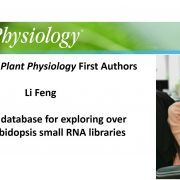
Recognizing Plant Physiology authors: Li Feng
Plant Physiology, Plant Physiology: Author ProfilesLi Feng, first author of An online database for exploring over 2,000 Arabidopsis small RNA libraries
Current Position: PhD student in Biomedical Engineering, SUSTech-HIT Joint Graduate/PhD Project, Department of Biology & Institute of Plant and Food Science, Southern University of Science and Technology…
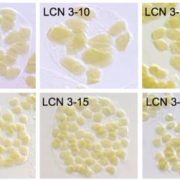
Decoding Natural Variation in Chloroplast Size
Plant Physiology, Plant Physiology: News and Views, ResearchLynn GL Richardson
[email protected]
Department of Plant Biology, Michigan State University, East Lansing, MI 48824
Chloroplasts, like their cyanobacterial ancestors, use binary fission to divide and generate new organelles. The origins of the division machinery stem from both the original eukaryotic…
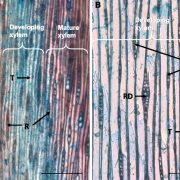
Ray Parenchymal Cells Contribute to Lignification
Plant Physiology, Plant Physiology: On The InsideIn conifers such as Norway spruce (Picea abies), lignin is a major cell wall constituent of secondary xylem (wood), forming approximately 27% of the dry weight. Lignin enhances the structural stability of wood as well as water transport through it. Lignification encompasses many steps, starting with…
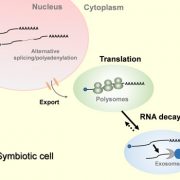
Translation has something to say in nitrogen-fixing symbiosis
Research, The Plant Cell, The Plant Cell: In a NutshellTraubenik et al. highlight the importance of translational control and mRNA decay for successful establishment of the nitrogen-fixing symbiosis. Plant Cell https://doi.org/10.1105/tpc.19.00647
By Soledad Traubenik, Mauricio Reynoso, Flavio Blanco, and María Eugenia Zanetti
Background: Legume plants…
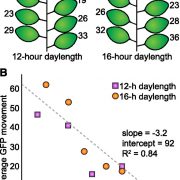
Plasmodesmatal Transport is Regulated by the Circadian Clock
Plant Physiology, Plant Physiology: On The InsidePlasmodesmata (PD) are membrane-bound tunnels that connect the cytosols of neighboring plant cells. The rate of PD transport between cells changes during the course of plant development. Forward genetic screens to identify factors controlling transport through PD have repeatedly revealed that chloroplasts…
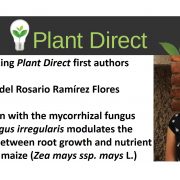
Recognizing Plant Direct authors: María del Rosario Ramírez Flores
Plant Direct, Plant Direct: Author ProfilesMaría del Rosario Ramírez Flores, first author of Inoculation with the mycorrhizal fungus Rhizophagus irregularis modulates the relationship between root growth and nutrient content in maize (Zea mays ssp. mays L.)
Current Position: PhD student, Plant Biotechnology at Center of Research and Advances…
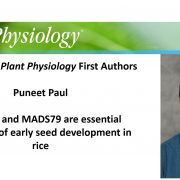
Recognizing Plant Physiology authors: Puneet Paul
Plant Physiology, Plant Physiology: Author ProfilesPuneet Paul, first author of MADS78 and MADS79 are essential regulators of early seed development in rice
Current Position: Post-Doctoral Research Associate at the Department of Agronomy and Horticulture, University of Nebraska-Lincoln
Education: Ph.D. in Plant Molecular Biology, Goethe University,…
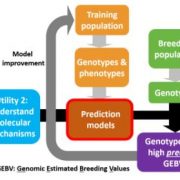
Predicting adult complex traits from early development transcript data in maize
Research, The Plant Cell, The Plant Cell: In BriefAn enduring goal of biologists is to link variation in the genome to phenotype. The discovery of easily measurable genetic markers in the recent past has led to the identification of variants controlling different traits through linkage analysis. Subsequently, advances in high-throughput sequencing have…

